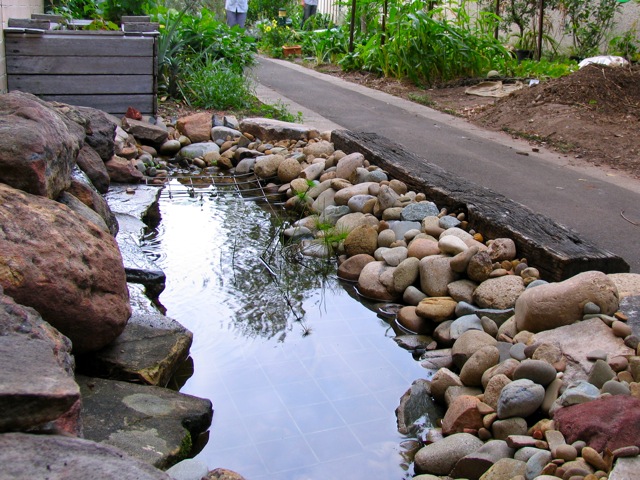
 Aquaponics just might be the ultimate closed-loop food production system. A healthy aquaponics system can provide its lucky owner with fresh fish and fresh organic vegetables year round, for very little ongoing cost. Getting an aquaponics system set up, however, can be costly. There’s lots of off-the-shelf systems to choose from nowadays, but they cost a bundle.
Aquaponics just might be the ultimate closed-loop food production system. A healthy aquaponics system can provide its lucky owner with fresh fish and fresh organic vegetables year round, for very little ongoing cost. Getting an aquaponics system set up, however, can be costly. There’s lots of off-the-shelf systems to choose from nowadays, but they cost a bundle.
But never fear – where there’s a will, there’s a way. After seeing Steve’s amazing bathtub aquaponics setup in Alice Springs, we were sold on the idea that an aquaponics system could be beautiful AND economical to build and maintain. And it all starts with a bathtub. And some ingenuity.
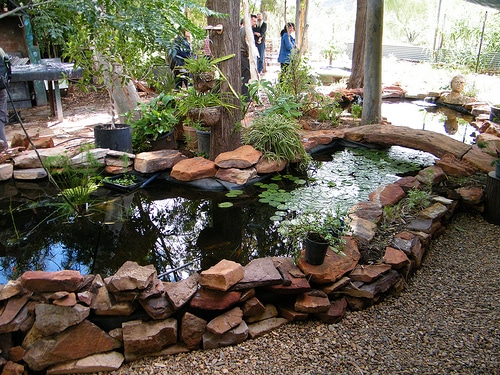
Part of Steve’s Alice Springs aquaponics system – a gorgeously productive environment, and not the least bit clinical.
I will say straight up that I am a big fan of the theory of aquaponics, but the actuality of many aquaponics systems I’d seen before Steve’s system left me a little bit… dissuaded. There seemed to be an awful lot of plastic and steel and a rather clinical air to it all. But the principals of aquaponics are so cool! Surely there must be ways to make aquaponics systems functional AND funky, while still being affordable?
So we started researching, and yes, it was possible. Though they’re not the norm, we could find examples of aquaponics systems that enhanced a living space while producing fish and veggies. And even better, we discovered that it is possible to build aquaponics systems with mostly recycled materials.
Building a system out of recycled stuff was particularly attractive to us. Apart from the cost savings, there’s the footprint of newly manufactured plastics and metal and all the bits in between that we wanted to avoid if we could. So when we met Charles from ecolicious, who builds funky, functional aquaponics systems using recycled materials wherever possible, we let out a hoot of delight.
We’re lucky enough to have a great relationship with Alexandria Park Community Center in central Sydney. This center is a hub of activity and resources for parents and kids alike, and is surrounded by an awesome community garden that just keeps on growing in size and scope. It’s also where we hold our Sydney permaculture courses.
After struggling to find a publicly accessible aquaponics system in Sydney to show our students as part of our PDC courses, we decided to take the plunge and partner with ecolicious to fund a small system for the center. One that would be open to the public and which would act as a productive, educational tool for our permaculture courses, the community garden and the wider community.
So during last January’s PDC at the center, we went into action and built a small bathtub aquaponics system.
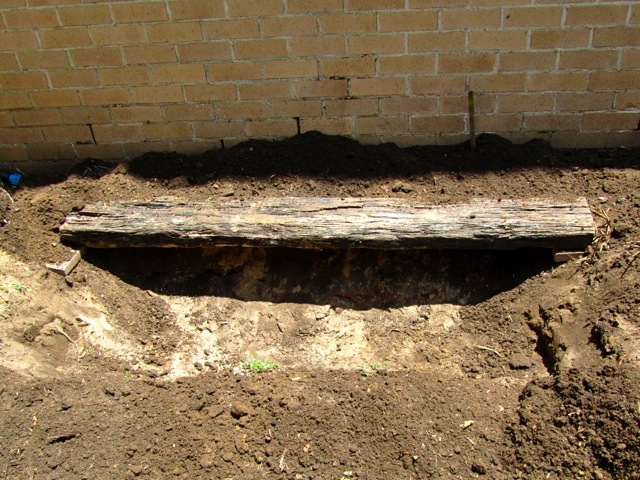
The hole for the aquaponics pond – an old railway sleeper provides a shelf for the fish to hide under
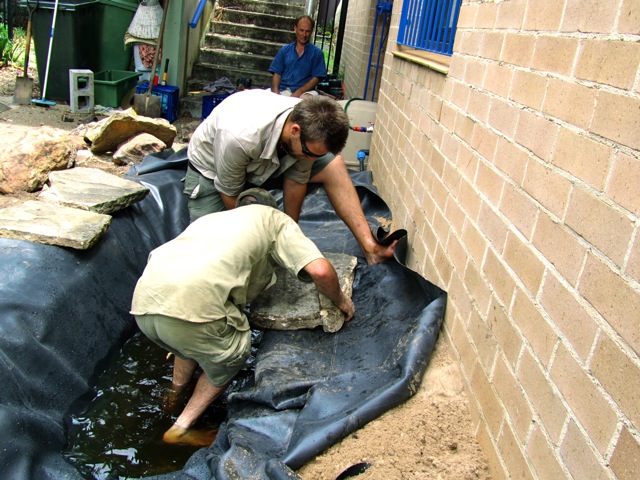
Charles and Floyd maneuvering the first rocks into position
This aquaponics system is a simple flood-and-drain system and consists of a fishpond, a growbed made from a bathtub, a bunch of tubes connecting the two, and a small pump. The water pumps slowly out of the fish pond, and into the bathtub growbed.
When the growbed is full (nearly flooded) of nutrient rich pond water, the auto siphon creates a vacuum sucking the water out of the growbed, and back into the fishpond. This oxygenates the roots of the veggies, and keeps the pond water clean.
And then the cycle starts again. All quite simple and stable. And, in time, super productive.
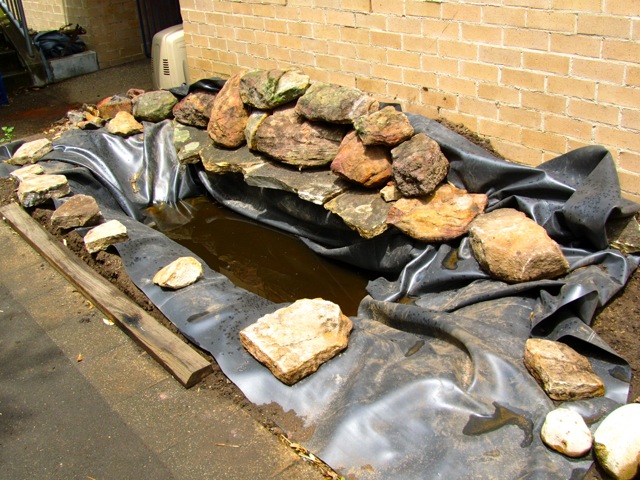
More rocks for the pond – the returning water will cascade down the rocks at the back, helping to oxygenate the pond
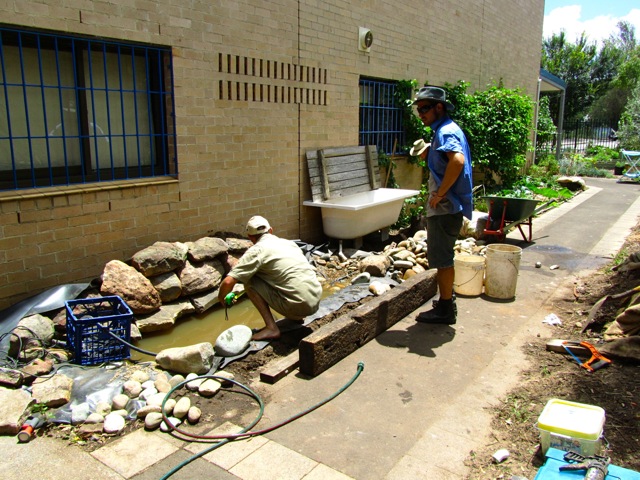
Getting there…
The fish (goldfish, in this system) swim around and poo merrily in the water of the fishpond. This nutrient rich water gets pumped into the growbed, where the planted veggies’ roots slurp up the nutrients( via good bacteria) in that water, and inject oxygen into the water to boot.
When the growbed is full of water, the siphon trips and this cleaned, oxygenated water then drains back to the fish pond. Happy fishies swim in their clean, oxygenated water, and off the system goes again on another cycle.
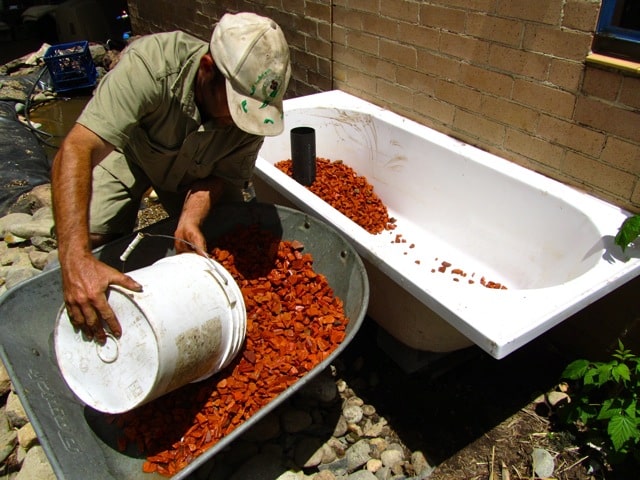
Adding some recycled 20mm clay roof tiles to the growbed
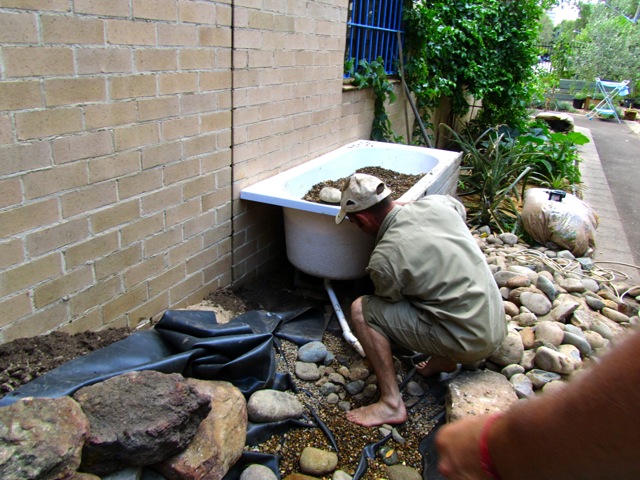
Charles attaches the drainage to the pond
Something we love about this aquaponics system is that it makes it’s surrounding area truly lovely to be in. The babble of clean water cascading down the rocks to a crystal clear fishpond is a delight on a hot summer’s day. And it’s producing food, while calming the soul!
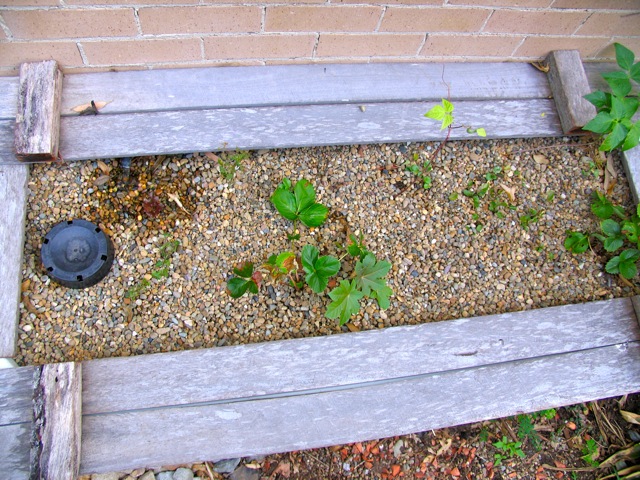
The completed growbed from above – we couldn’t resist planting some stuff ahead of schedule…
At time of writing this system is still settling in or cycling. It takes a couple of months for the biology in the pond, in the form of good bacteria, water plants and fish interrelationships, and also in the river-pebble filled growbed to really start rocking. And so it will be a little while before we’re seeing luxuriant growth from the salad greens, tomatoes and beetroot we’re planning to plant in the growbed.
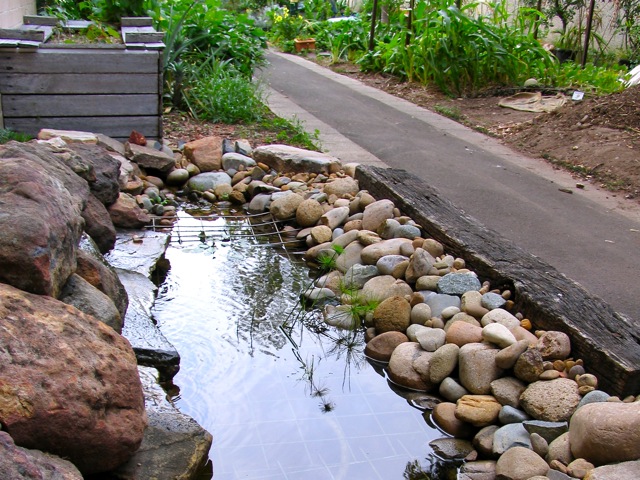
The aquaponics system a couple of weeks later – biology settling in, nearly ready for more fish and veggies
But that’s just fine. I wouldn’t mind just sitting by this pond while i wait. We’re taking a gentle approach with this system to make sure it’s as stable as it can be in terms of biology and nutrient cycling. We want happy and resilient fish and veggies. And in the meantime, there’s so much food ripening in the surrounding garden that there’s plenty to munch on while we all wait.
So there you have it! One DIY urban aquaponics system. And not a steel frame or a sterile plastic box in sight – just lovely rocks, water, plants, wood, fish and veggies. Beauty and productivity, all in the one small footprint.
If you’d like to get a comprehensive overview on how to build an ecolicious-esque aquaponics system of your very own, come along to one of our aquaponics workshops.
Or get in touch with Charles from ecolicious – he would love to hear about your DIY aquaponics adventures, wherever in the world you may be, and is happy to give advice on how to build a home system – you can contact him at info@ecolicious.com.au
Lastly, come and see our system! The Alexandria Park Community Center and it’s surrounding garden is open every school day, and open to all. You are welcome. Directions to the center are here.
Many, many thanks to Charles for his efforts, enthusiasm and knowledge, and for making this system happen. Thanks also to our most excellent aquaponics build crew Adam Kennedy, Floyd Constable and Ryan Rutley. Special mention to pebble-washer Jessie. Lastly thanks to Jo from Connect Redfern and everyone at Alexandria Park Community Center for saying yes to our latest addition to your garden.
[slideshow]

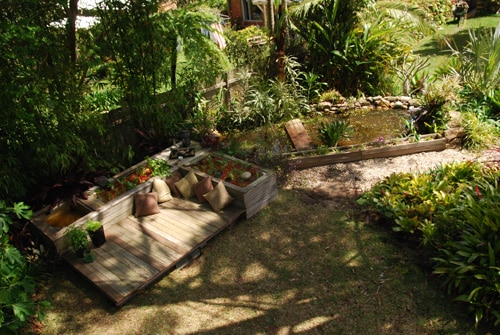
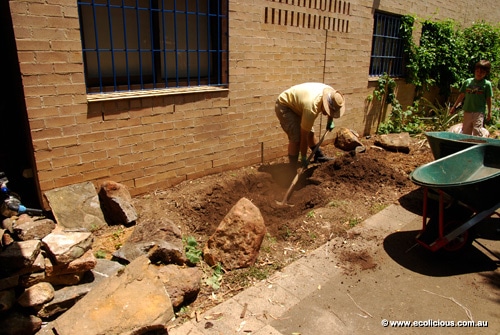
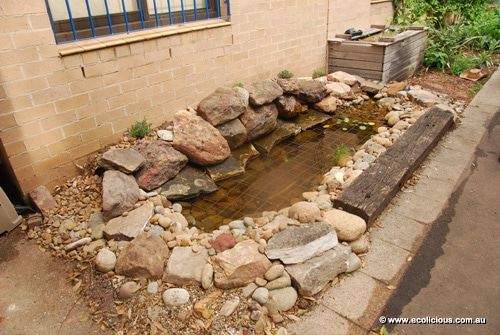
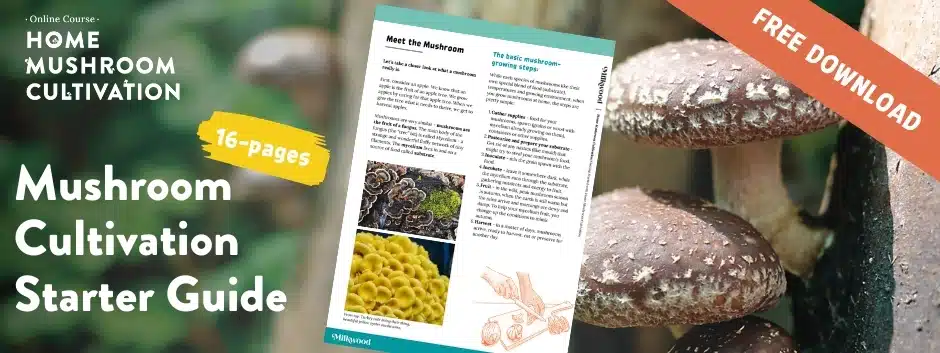
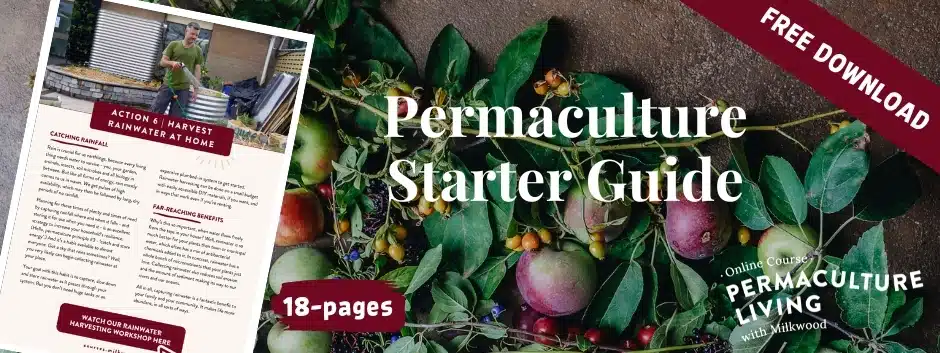

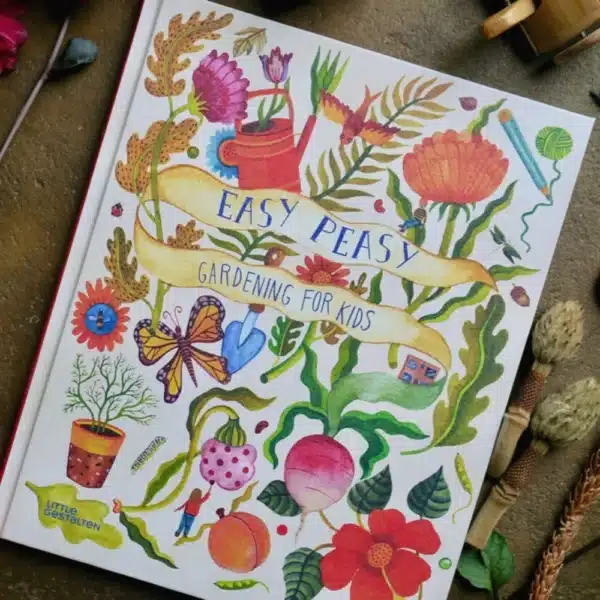
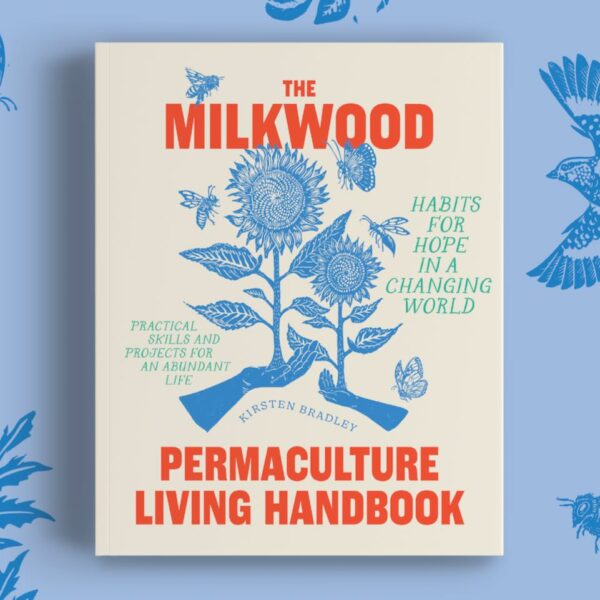
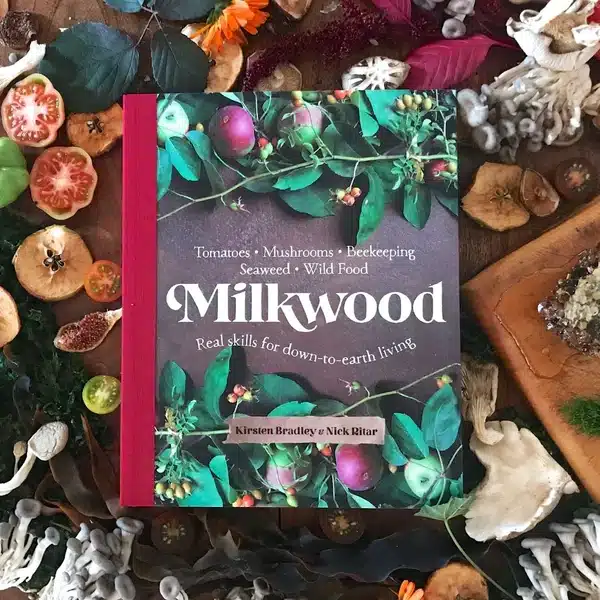






Hi,
Love it!!! We have 2 acres and would love to be able to set one up!!! The will to do it!
Weekend/week away in the Hunter???
Look forward to site up dates!!!
Best looking Aquaponics system I have seen. You mention it is a closed system? I thought you needed to feed the fish from external sources? This fact has always put me off building one as to my knowledge fish food is generally made from other fish commercially caught. This would make Aquaponics unsustainable to my thinking.
in this system there’s no feeding of fish – they (the goldfish) are prettymuch care-free. You could also incorporate a black soldier fly larvae breeding system if you wanted sustainable fish food (ie if you wanted to grow the fish to eat)…
Awesome system, and it looks gorgeous. I would love to have the know how to set one up at my place!
hi
thanks for the site and info.
One question… most of my research indicates that sunlight on the water will produce problems with algae growth, you dont seem to have that problem or be covering your fish pond. Is there a reason for this that you could explain to me?
thank you and best of luck
regards Simon
Hi Simon, well the fish eat the algae, as do the other biology in the pond…. if you have a stable + healthy environment in there it prettymuch sorts itself out…
Really nice setup guys! Charlie does some great work.. have been really impressed with the ‘rise’ of milkwood too, keep it up!
Reblogged this on diaryofanoccupier.
Wow, this is a really neat diy aquaponics idea…simple, nice and beautiful. Great pictures by the way.
Cheers
Steven
I am in the process of setting up a backyard bathtub aquaponics system and was wondering if you might answer some questions for me as I live too far away to attend workshops? 1. Why do you need a siphon in the growbed? If you just had the large polypipe with holes in it, wouldn’t that do the job? 2. What material is best to fill the growbed? I was thinking large granite pebbles at the bottom and fine granite pebbles at the top. 3. How deep should the top section be where the plants will be grown? Thank you… Read more »
Robyn the siphon is so that the growbed fills entirely with water before the siphon triggers the draining- hence the ‘flood and drain’ technique. any inert pebbles can be used, and the depth of the growbed is variable depending on how big your water reservoir is and the root systems of what you’re trying to grow in there.
Gravel needs to be coarse 3/4 inch or 20 mm. Depth should be 12″ or 30 mm. Gravel needs to be tested with vinegar so it doesn’t affect pH.
I’m also in the process of doing this with a biologic pool at the same time and chickens and ducks added to the equation….we shall see lollll
I love this idea. I am looking into moving to Alabama. Would this need to be under a greenhouse during winter time?
Hey Amber – from what i knwo fo Alabama, you shouldn’t need to? Unless you really want to accelerate your winter harvests –
Can more then one bathtub be connected to the pond?
yep I dont see why not?
Hi, would a system like this need to be built in a greenhouse in Tennessee? Also can wooden boxes be used instead of a bath tub. I am thinking about doing something like this with more then one box connected to the pond. 🙂
Yes you can use a wooden box that was waterproofed instead of a bathtub? As for whether you need it inside a greenhouse or not – depends if you want year-round harvests – if you’re somewhere where it gets really cold, a greenhouse might be a good idea?